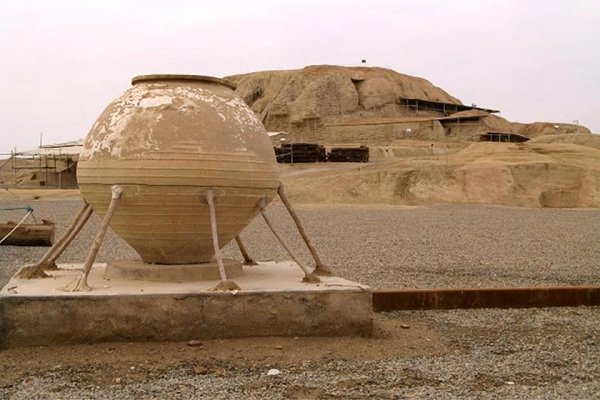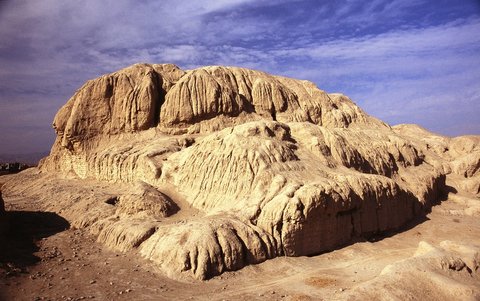Iran (IMNA) - Although it may initially appear that this location is only in ruins, if you look closer, you can hear the ancient artifacts conversing with you. Learn more about this city, its culture, and its people by reading the following.
Narratives say that people in Kashan called this mysterious area of the city “The Cursed City" and no one dared to approach this terrifying location before a severe flood that led to the discovery of Sialk hills.
Perhaps it wouldn't be accurate to refer to this structure as "hills"; in reality, it is a ziggurat, a rectangular stepped tower that is occasionally topped by a temple and is made primarily of clay.
In fact, the overflow revealed a wide variety of tools and potteries in interesting shapes. Roman Ghirshman, a renowned French archeologist and expert on ancient Persia from the Louvre museum, eventually traveled to Iran to begin excavation on this special historical site with his team. As a result of his findings, a large part of the Sialk hills treasure is now held in Paris’s prestigious museum.
Until 2001, when Dr. Malek Shahmirzadi began new excavations throughout five sessions, nobody paid attention to Sialk hills, despite Ghrishman's discoveries and research findings, which were published as two books in French.
Ghrishman and Dr. Malekshahi each spent three seasons excavating the Sialk hills in excavations that produced amazing and fascinating results.
Ghrishman estimated this civilization dated more than 10,000 years old. The northern hill and southern hill, the two major parts of the Sialk hills, each have six main levels and, consequently, eras, each with its own exclusiveness, as revealed by the excavations.
Sialk I
Sialk I is the oldest and deepest layer of the archaeological site. According to Ghrisman's research, the then residents of the hills would cover their straw-and-branch cottages with mud. In unique ovens, they produced their pottery.
Sialk II
Sialk people in this era made potteries that depicted various shapes, like plants and animals, each having special meanings.
Shepherds, hunters, and farmers made up the majority of them. Even copper was discovered by these people, and it was used to create tiny jewels.
One of the strangest things about these people was that they buried their loved ones’ corpses in their own homes, covered them with red clay under their customs, and buried them alongside their valuable possessions.
Sialk III
Some 6,100 years ago, Sialk people migrate from the northern hill to a southern one. However, they continue to bury the dead bodies on their home floors. But the most significant thing about this era happened when they started to use the pottery wheel.
This tradition suggests that the population should have risen, and they have to use more effective ways to meet the consumer’s needs.
At that time, they were inspired by human shapes to design their handicrafts. Also, their jewelry became modernized using silver as the main material.
Sialk IV
Archaeological evidence suggests that significant historical inventions happened during these 500 years. They learn how to write and read!
Here, several cylindrical seals were found in this layer with animals or other geometric shapes. This shows us that the economy and trade in Sialk were common by that time, especially due to the fast-rising population.
Sialk V
In this epoch, which goes back 3,200 years ago, new migrants who brought gray pottery with them arrived in the hills. Moreover, they didn’t bury their deceases in their home.
In fact, they made a cemetery on the southern side of their settlement using their valuable belongings, as they believed in the afterlife.
Sialk VI
In that era, new migrants constructed fresh houses and cemeteries in the remaining span of the fifth era.
They somehow changed the burial traditions and the arcades of the graves to a hill-shaped structure. Overall, more than 200 graves were discovered at this site.
In 2019, Louvre played host to an international conference on Sialk hills attended by archaeologists from Iran, Germany, England, and France.
The event was aimed to cast a new light on the ancient site some 80 years after its first excavation to lay an opportunity to present to the public the diversity of research and projects, as well as current issues of preservation and enhancement of the site.
As mentioned by the Louvre, the oldest levels document the occupation of the Iranian plateau from the Neolithic to the Chalcolithic over more than two millennia. Then, around 3000 BC, the site is integrated into the vast cultural area called Proto-Elamite, during which specific writing appears.

AFM


Your Comment